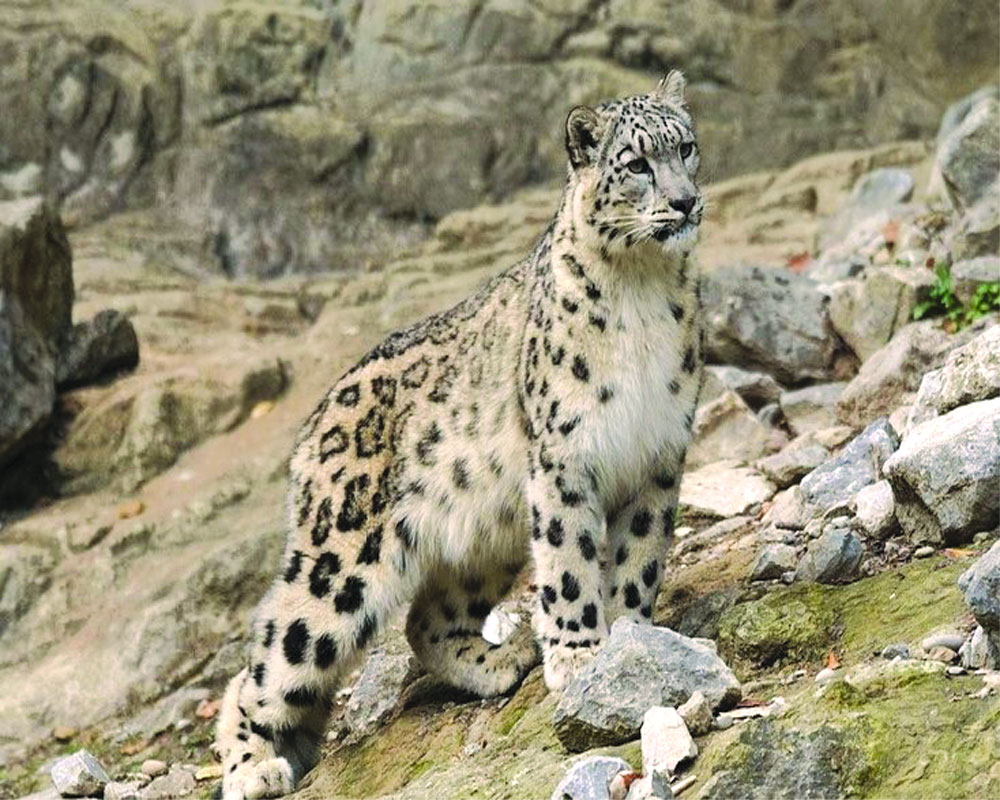In a move that would go a long way in the conservation of snow leopards and prevent land degradation of the Himalayan ecosystem inhabited by a large number of locals, India has identified three sets of landscape — Hemis-Spiti across Ladakh and Himachal Pradesh, Nanda Devi-Gangotri in Uttarakhand and Khangchendzonga-Tawang across Sikkim and Arunachal Pradesh — for the restoration of the flagship species in the high-altitude region.
“The Government is committed to landscape restoration for snow leopard habitat conservation and is implementing participatory landscape-based management plans involving local stakeholders,” Union Minister of State for Environment Babul Supriyo said on Friday on the eve of the International Snow Leopard Day 2020 on Saturday. He listed out the three landscapes.
The iconic big cats’ conservation status improved from “endangered” to “vulnerable” in 2017, as the Centre has been conserving the snow leopard and its habitat through the Project Snow Leopard (PSL), which was launched in 2009.
According to an estimate, there are around 7,000 leopards, found in 12 countries — India, Nepal, Bhutan, China, Mongolia, Russia, Pakistan, Afghanistan, Kyrgyzstan, Kazakhstan, Tajikistan and Uzbekistan.
In India, the geographical range of snow leopards encompasses a large part of the western Himalayas including Jammu and Kashmir, Himachal Pradesh, Uttarakhand, Sikkim and Arunachal Pradesh.
The landscape, covering around 47,000 sq km, has at least five national parks where wild animals including snow leopards can be spotted.
Hemis National Park is situated in the eastern Ladakh region of Jammu & Kashmir while the Great Himalayan National Park, one of the natural world heritage sites, is in Himachal Pradesh’s Kullu region.
Similarly, the Gangotri National Park in Uttarkashi, Uttarakhand is home to 15 species of mammals that include some of the rare and endangered species such as snow leopard, ibex, tahr, bharal, Himalayan snowcock and Himalayan monal.
The Khangchendzonga National Park is one of the 18 Biosphere Reserves of India situated in the North and West Sikkim districts. And the Namdapha National Park of Arunachal Pradesh is the third largest national park in India, in terms of area and one of the richest protected areas in terms of biodiversity. The park is home to a great diversity of mammal species including the 4 big cat species that includes snow leopards, clouded leopards, common leopards and tigers along with other large predators such as dholes, wolves, and Asiatic black bears.


























